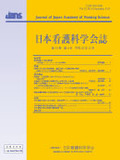Japanese
English
- 販売していません
- Abstract 文献概要
- 参考文献 Reference
要旨
本研究は,地域密着型中規模病院の小児科一般外来における看護師の働きを明らかにすることを目的に,エスノグラフィーの方法を用いて,首都圏のベッドタウンにある病院(約300床)の小児科一般外来で,参与観察,インタビューを行った.研究参加者は小児科外来の11名の女性看護師を中心に,子どもと家族,他の医療職者など,小児科外来に交流する人々であった.その結果,看護師の働きとして,(1)気になる親子を見つけて診察室へつなぐ,(2)診察室での気がかりを補足し,家族の背中を押す,(3)子どもを育てる家族の力を支える,(4)子どもと家族との間を調整する,(5)見過ごしてはいけない親子に関わり,つなぎとめる,の5つのテーマが明らかになった.さまざまな健康レベル,発達段階の子どもと家族がさまざまなニーズを抱えて来院する,混沌とした小児科外来における看護師の働きは,単なる「診療の補助」以上の意味があった.先の展開を読むことが難しい緊張した場で,看護師は常に「アンテナを張って」気になる子どもと家族を見つけ,援助の機会はこの場限りかもしれないことをふまえて,そのとき,その対象に合った個別のアプローチに素早くつなげようとしていた.
The purpose of this study was to describe caring of nurses provided to children and their families at the pediatric outpatient department of a community hospital. An ethnographic approach was employed for data collection and analysis. The data were obtained by participant observation and interviews. Eleven female nurses and other medical professionals working at the pediatric outpatient department participated in the study. Children and their families were also important participants. Caring of nurses at the pediatric outpatient department in the community hospital was comprised the following; Identifying critical children and their families and transferring them to consultation rooms, providing the families with reliable information and giving them support and encouragement, empowering families to raise children, resolving differences between children and their families, and identifying families with prevalence of child abuse and trying to keep the relationship with them. The pediatric outpatient department in the community hospital was a chaotic place; children in various developmental stages and of varied physical levels visited the hospital daily with their families. Nurses were always nervous because the behavior of the children and their families was unpredictable. The nurses found it difficult to understand the children’s condition and take care of them because time was extremely limited at the department and they did not know the usual conditions of children. The nurses stated that they “put up the antenna” to identify the needs of children and their families and judge what type of help they needed, and provided them appropriate nursing care within limited time.
Copyright © 2014, Japan Academy of Nursing Science. All rights reserved.


